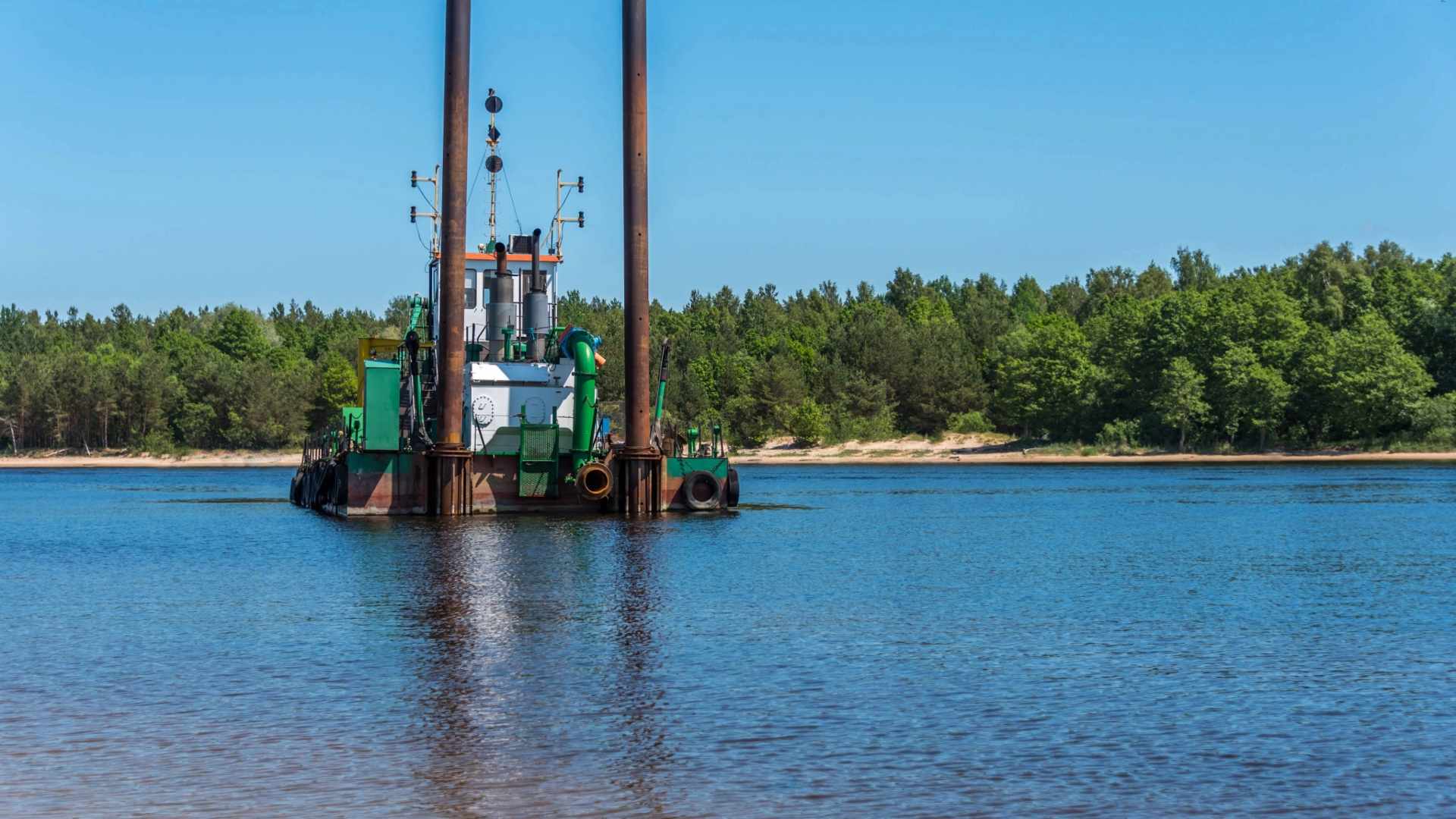Introduction
The Mississippi River is one of the most vital arteries of commerce in the United States, carrying hundreds of millions of tons of cargo annually. From grain exports and petroleum products to coal and industrial equipment, the river’s navigability directly influences the economic health of the nation. However, maintaining a clear and safe waterway along such a dynamic and sediment-heavy river is no small feat. That’s where maintenance dredging comes in — a continuous and essential operation that ensures the river remains open to commercial vessels year-round.
At the heart of these efforts is a powerful tool of modern dredging: the hopper dredge. This floating workhorse plays a critical role in removing silt and sediment from key parts of the Mississippi River, preventing shoaling, restoring depth, and keeping commerce moving smoothly along one of America’s most iconic waterways.
Understanding Maintenance Dredging
Maintenance dredging is the routine process of removing sediment that naturally accumulates in rivers, harbors, and shipping channels. Unlike capital dredging, which is performed to deepen or widen a channel for the first time, maintenance dredging is an ongoing necessity to preserve navigable depth and prevent disruptions.
In rivers like the Mississippi, the combination of high sediment load, changing flow patterns, and heavy rainfall often leads to rapid siltation. Without frequent dredging, sediment builds up on the riverbed, forming shoals that make navigation difficult or even dangerous for large vessels.
By continually removing this material, maintenance dredging prevents the river from becoming unnavigable — thereby supporting shipping routes, trade operations, and the broader logistics network connected to the inland waterway system.
Hopper Dredges: Essential for Efficient Dredging
Among the many tools used in the field of dredging, the hopper dredge stands out for its efficiency and mobility. A hopper dredge is a self-propelled ship equipped with trailing suction pipes that remove sediment from the riverbed and store it in an onboard hopper. Once the hopper is full, the dredge travels to a designated disposal or beneficial use site to release the material.
Hopper dredges are particularly suited for high-traffic or open-water locations like the lower Mississippi River, where their ability to move quickly and operate continuously minimizes disruptions to commercial navigation.
The Mississippi River Hopper Dredge Contract No. 3, for instance, awarded in 2025 and currently being carried out by the Great Lakes Dredge & Dock Corporation (GLDD), involves the use of a trailing suction hopper dredge to maintain vital sections of the river from Baton Rouge to the Gulf of Mexico’s Southwest Pass. This work is overseen by the U.S. Army Corps of Engineers, New Orleans District, and plays a major role in preserving the river’s operational reliability.
Supporting Commerce and National Trade
The Mississippi River system supports over 500 million tons of freight each year, linking agricultural producers in the Midwest with global markets via the Gulf of Mexico. Without effective maintenance dredging, this level of economic throughput would be impossible.
Shoaling in major navigation corridors like Southwest Pass — the main entrance channel to the river from the Gulf — can quickly halt deep-draft vessel traffic. Each delay caused by insufficient dredging can cost shipping companies thousands of dollars per day and ripple across the supply chain.
By ensuring that vessels can safely transit at all times, maintenance dredging reduces the risk of bottlenecks and preserves the flow of goods. In this way, dredging supports not just river users, but entire industries dependent on the Mississippi’s functionality — from agriculture and energy to construction and manufacturing.
Environmental Considerations and Beneficial Use
While dredging often raises environmental concerns, advancements in practice and regulation have led to more sustainable operations. Hopper dredges are typically outfitted with equipment that minimizes turbidity and sediment plumes, and dredged material is now frequently repurposed in beneficial use projects.
On the Mississippi River, this means using clean, dredged sediment to restore eroded wetlands, rebuild marshes, or strengthen barrier islands — efforts that help protect coastal communities from storm surges and enhance local ecosystems.
Projects such as those conducted under GLDD contracts often designate disposal sites that contribute to coastal restoration, turning a necessary operational task into an environmental benefit.
Coordination and Oversight
Maintenance dredging on a system as complex and vast as the Mississippi River requires close coordination between federal agencies, contractors, and local stakeholders. The U.S. Army Corps of Engineers (USACE) plays a central role in managing dredging schedules, determining sediment disposal methods, and ensuring that navigation priorities are met while minimizing ecological impacts.
Contractors like GLDD bring operational capacity and specialized equipment to the table, deploying dredging assets quickly when sediment conditions demand it. These partnerships are crucial to responding to seasonal changes, emergency shoaling, and storm-related sediment influx.
A Critical Investment in Infrastructure
As global trade volumes increase and extreme weather events become more common, the demand for reliable inland waterways will only grow. Maintenance dredging, often overlooked in the broader conversation about infrastructure investment, is in fact one of the most cost-effective ways to keep commerce flowing and protect national economic security.
Investments in dredging support a wide array of infrastructure goals — from export competitiveness and energy delivery to flood control and habitat restoration. The Mississippi River is a prime example of how vital this work truly is, and the role hopper dredges play in meeting these challenges cannot be overstated.
Conclusion
Maintenance dredging is not just a technical operation — it’s a lifeline for the Mississippi River and the many industries and communities that depend on it. Through the use of hopper dredges, contractors like GLDD and agencies like the USACE are working tirelessly to ensure this great waterway remains navigable, productive, and resilient.
By reducing silt buildup, enhancing safety, and supporting beneficial environmental outcomes, maintenance dredging proves its value year after year — keeping America’s most important river flowing strong.
